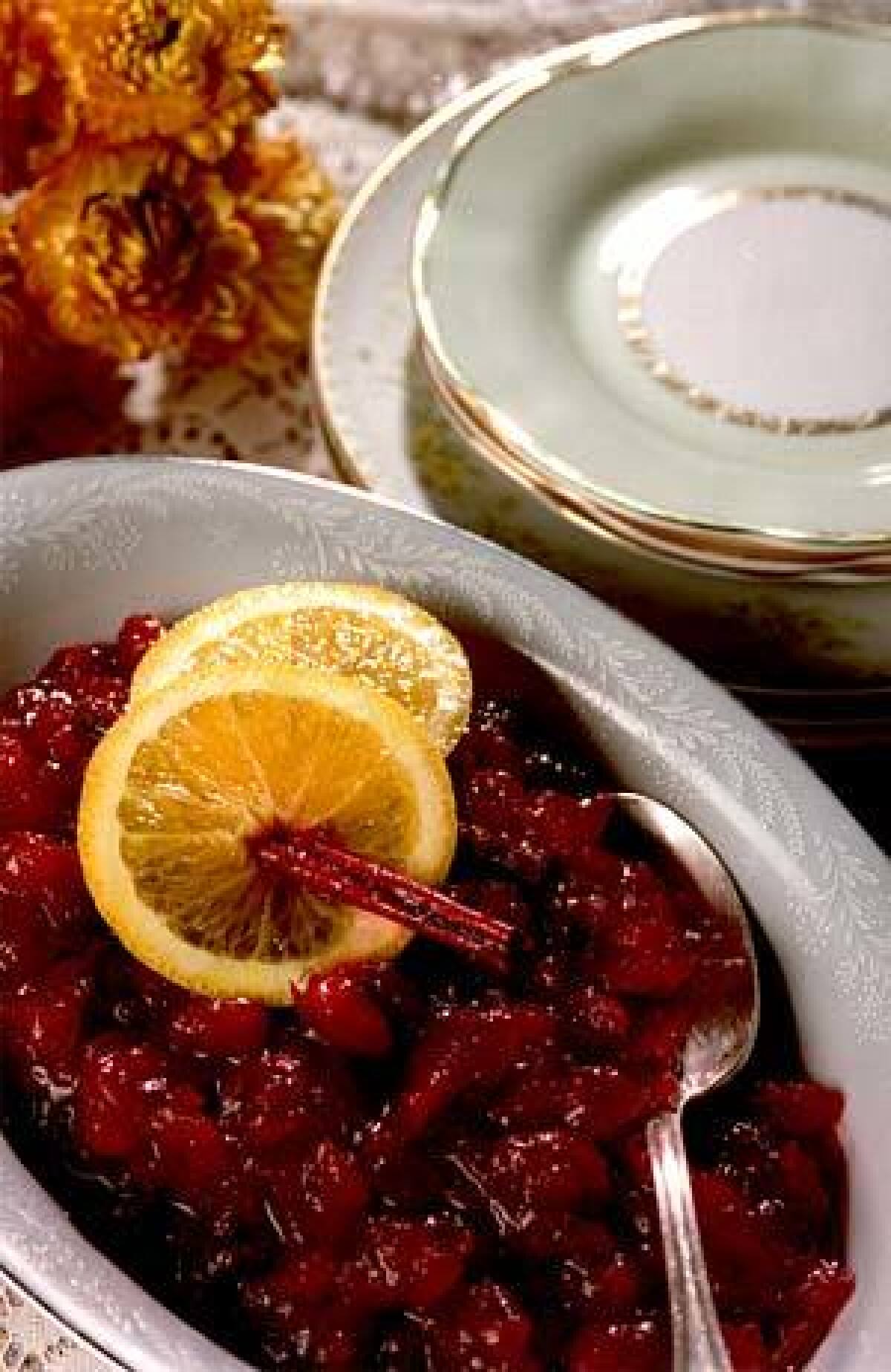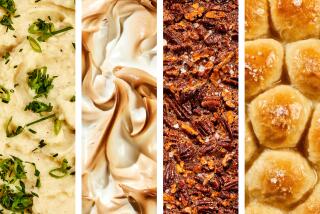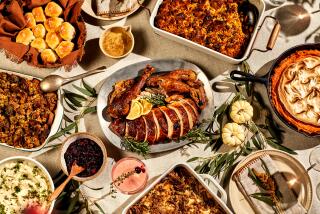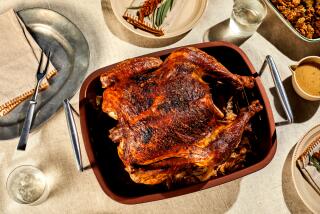Fear not! Holiday help is on the way

- Share via
There’s a newcomer to this year’s Thanksgiving Handbook: the roasted brined turkey we introduced around Christmastime last year.
Brining your turkey--soaking it overnight in a salt-water solution--makes the bird more moist, more tender and more flavorful. Better yet, it requires no fancy equipment and takes only a few minutes of preparation time.
Of course, you’ll also find instructions for making a basic roast turkey as well as the bird we call “the ultimate turkey,” introduced by The Times Test Kitchen in 1992. The Test Kitchen method turns out amazingly moist meat in radically shorter time.
Here’s the basic idea: Stuffing is placed under the skin on the turkey’s breast, rather than inside the body cavity. Also, the turkey is roasted at a slightly higher than normal oven temperature--350 degrees for about nine minutes a pound instead of the usual 15 to 20 minutes per pound. Without a lump of stuffing inside the bird, the turkey can cook faster. And the stuffing on top of the breast keeps that meat moist while the dark meat cooks.
There are, however, some caveats to this method. It works best with smaller to average-size turkeys, 10- to 14-pounders. If you must have 20 pounds of bird to feed your brood, cook two smaller turkeys, rather than one large one, by this method.
To avoid embarrassing undercooked spots, realize that the turkey must be completely thawed before going in the oven. And don’t truss the bird or tuck under the wings; you need to expose the entire surface of the meat to the heat of the oven when cooking times are short.
In past years, we recommended taking the turkey out of the oven when the internal temperature of the meat reaches 155 degrees to 160 degrees (harmful bacteria are killed at 160 degrees). This took into account the “push” in temperature, usually 10 degrees or more, that comes when a turkey is taken from the oven and allowed to sit for 20 minutes while the juices set: The meat, in effect, keeps cooking after it comes out of the oven.
This year, however, providing our own margin of safety, we’re recommending the meat be 165 degrees when it’s taken from the oven. And we encourage you to test the bird in several spots with a thermometer--in the thickest part of the inner thigh and in the breast. Our tests at 165 degrees produced a bird that was quickly cooked (1 hour and 40 minutes for a 12-pound bird), though there was some sacrifice in the moistness of the breast meat.
If you decide to bring the bird out when it hits 160 degrees and find a few red spots at the joints when you begin to carve the turkey, don’t panic. Remove the leg quarters, place them in a pan and tent with foil. Return to a 350-degree oven for about 10 minutes to finish cooking while you carve the breast meat.
More to Read
Eat your way across L.A.
Get our weekly Tasting Notes newsletter for reviews, news and more.
You may occasionally receive promotional content from the Los Angeles Times.










